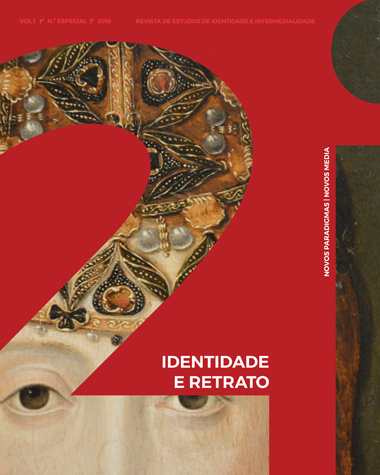Intermediality
Working hypotheses and case studies
DOI:
https://doi.org/10.21814/2i.2433Keywords:
narrative studies; phenomenology of visuality; intermediality; representation; transnarrativity.Abstract
Intermediality is based on the principle of dialogue between disciplinary fields, is linked to the cult of interdisciplinarity and the so-called conceptual integration theory (‘conceptual blending’; cf. Schneider & Hartner, 2012). In the framework of these interactional movements, the following aspects entailed by intermediality are highlighted: a dynamic and trans-semiotic conception of the narrative and the media discourses; the tendency to cross boundaries between languages; the refusal of a hierarchy that establishes priorities between cultural practices (such as literature is superior to cinema and cinema to television). The narrative with intermedial propensity develops a dynamic and transnarrative vocation that requests, on the receptive plane, a correlative dynamism of reading and analysis, with the resulting exegetical deepening.
Downloads
References
Herman, D. et alii (Eds.). (2005). Routledge encyclopedia of narrative theory. London and New York: Routledge.
Hutcheon, L. (2013). Uma teoria da adaptação [2006]. 2ª ed. Florianópolis: Editora da UFSC.
Kreiswirth, M. (1994). Tell me a story: The narrativist turn in the Human Sciences. In M. Kreiswirth & Th. Carmichael (eds.), Constructivist criticism: The Human Sciences in the age of theory. Toronto: University of Toronto Press.
Margolin, U. (2009). Focalization: Where do we go from here? In P. Hühn et alii (eds.), Point of view, perspective, and focalization: Modeling mediation in narrative (pp. 41–57). Berlin/New York: Walter de Gruyter.
Pessoa, F. (2001). Livro do Desassossego composto por Bernardo Soares, ajudante de guardalivros na cidade de Lisboa (ed. R. Zenith). 3ª ed. Lisboa: Assírio & Alvim.
Pires, J. C. (1972). O Delfim. 5ª. ed. Lisboa: Moraes Editores.
Portela, A. (Entrevistador) & Pires, C. (Entrevistado). (1991). Cardoso Pires por Cardoso Pires. Lisboa: Dom Quixote.
Queirós, E. (s.d.). A Relíquia. Lisboa: Livros do Brasil.
_____ (2000). O crime do padre Amaro (ed. C. Reis e M. R. Cunha). Lisboa: Imprensa Nacional-Casa da Moeda.
_____ (2009). Contos I (ed. M.-H. Piwnik). Lisboa: Imprensa Nacional-Casa da Moeda.
_____ (2011). Almanaques e outros dispersos (ed. I. Fialho). Lisboa: Imprensa Nacional-Casa da Moeda.
Quendler, Ch. (2012). The conceptual integration of Intermediality: Literary and cinematic camera-eye narratives. In R. Schneider & M. Hartner (eds.), Blending and the study of narrative: Approaches and applications. Berlin/Boston: Walter de Gruyter.
Reis, C. (1990). As conferências do Casino. Lisboa: Pub. Alfa.
_____ (2018). Dicionário de estudos narrativos. Coimbra: Almedina.
Schneider, R. & Hartner, M. (Eds.). (2012). Blending and the study of narrative: Approaches and
applications. Berlin/Boston: Walter de Gruyter.
Sousa, S. P. G. (2001). Relações intersemióticas entre o Cinema e a Literatura: a adaptação cinematográfica e a recepção literária do Cinema. Braga: Centro de Estudos Humanísticos/Universidade do Minho.
Verde, C. (2015). Cânticos do Realismo. O livro de Cesário Verde (int. e nota biobibl. H. C. Buescu). Lisboa: Imprensa Nacional-Casa da Moeda.
Wolf, W. (1999). The musicalization of fiction: A study in the theory and history of Intermediality.
Amsterdam/Atlanta: Rodopi.
_____ (2005). Metalepsis as a transgeneric and transmedial phenomenon: A case study of the possibilities of ‘exporting’ narratological concepts. In J. Meister et alii (eds.), Narratology beyond criticism: Mediality, disciplinarity. Berlin: Walter de Gruyter.


.jpg)










